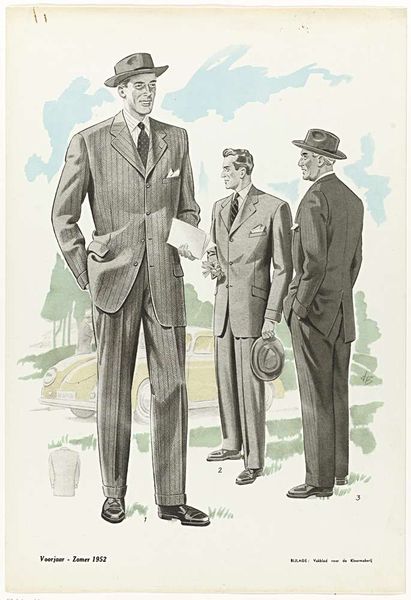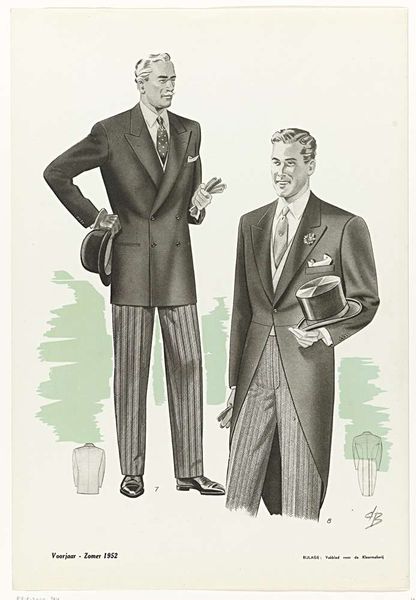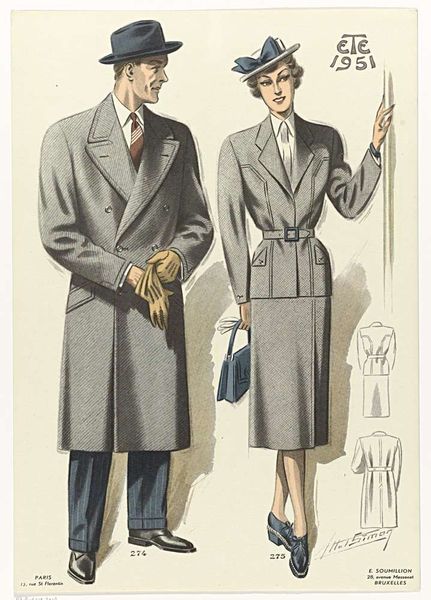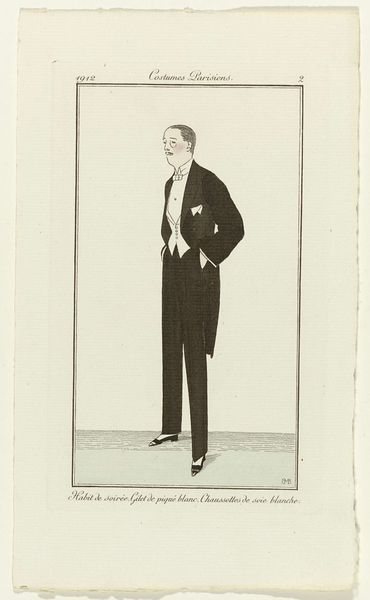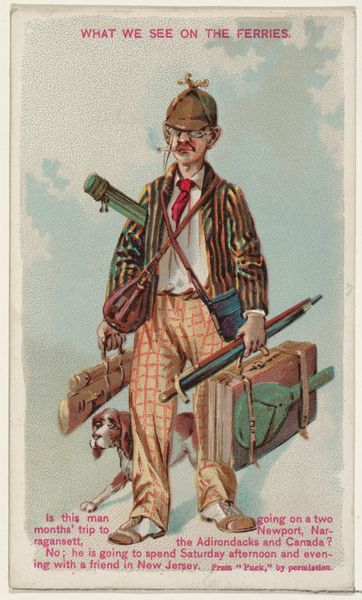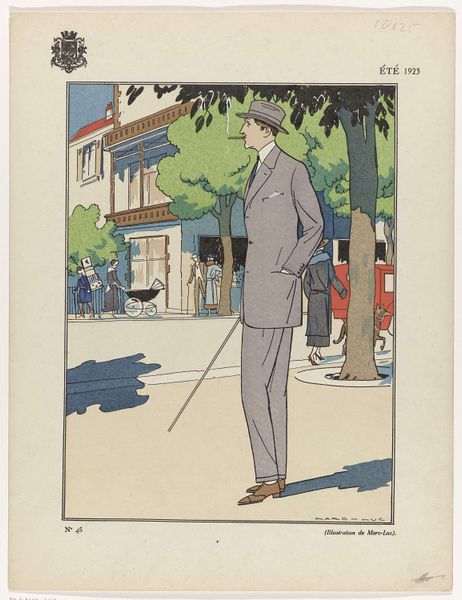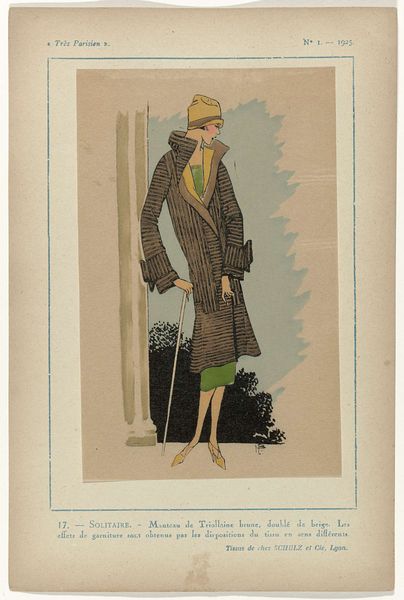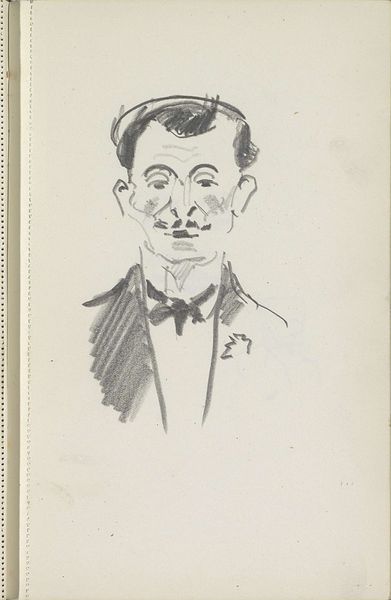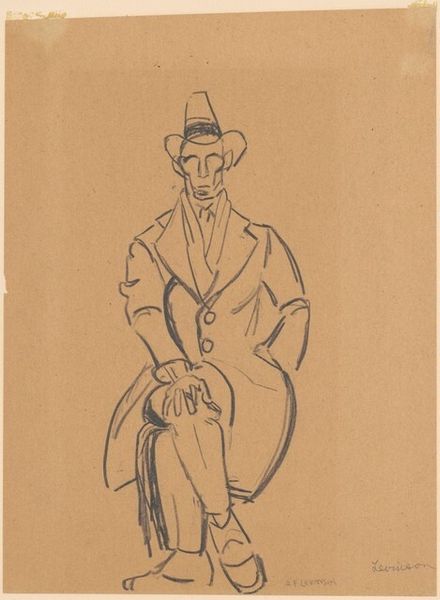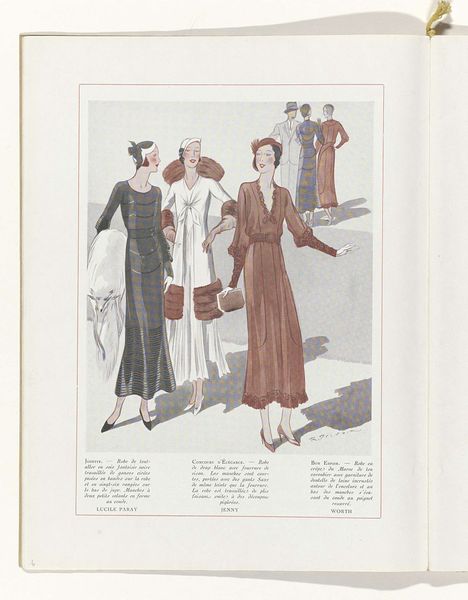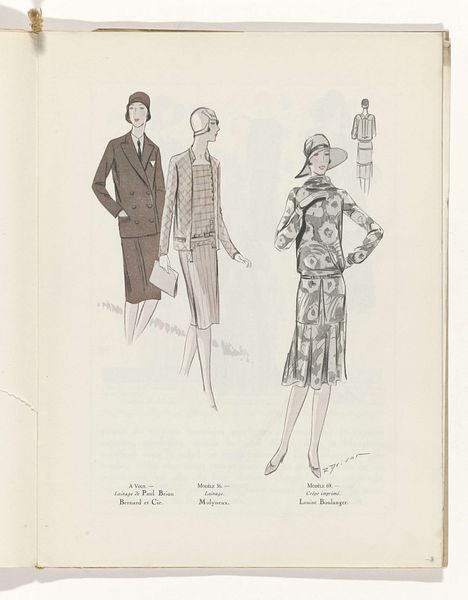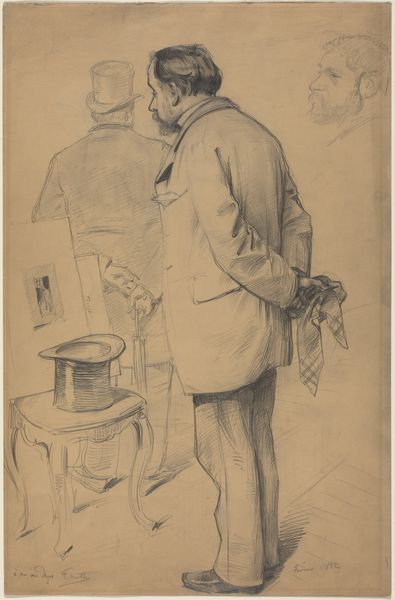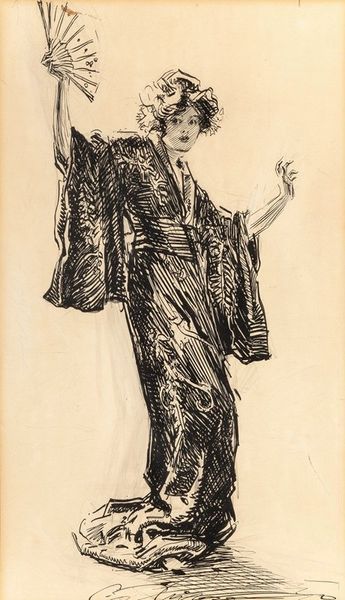
Dimensions: height 400 mm, width 274 mm
Copyright: Rijks Museum: Open Domain
Curator: Here we have “Vakblad voor de kleermakerij, Voorjaar-Zomer 1952, Nr. 6,” which translates to "Journal for Tailoring, Spring-Summer 1952, No. 6.” Editor: My first thought is “dapper.” There’s such confidence radiating from the primary figure. The almost monochromatic scheme makes him very timeless. Curator: Indeed. Looking at it from a material perspective, it is quite interesting how the artist chose to represent various fabrics. You have the crispness suggested in the suit fabric in contrast to what seems to be a light weave in the tie, each represented through meticulous hatching and shading techniques. Editor: Absolutely. The hat he's holding really amplifies that sense of stylishness, it is like a symbolic offering, representing societal expectations of class and aspiration, not just tailoring. His hand is so carefully rendered to convey holding his hat and inviting you in. It reflects a sort of approachable but well postured ideal. Curator: I am interested in this idea of the symbolic weight that this illustration carried for the consumer. Fashion always is enmeshed in cycles of aspiration and access. The magazine in which it was printed undoubtedly catered to dressmakers, acting as a resource for stylistic tendencies for their clients as well. Editor: Precisely. His smirk seems to be saying "I understand what appearances communicate". I see elements harking back to traditions of court portraiture but now for a broader audience. Almost like royalty, but within the reach of the everyday man. Curator: Well, in essence, the very notion of 'sprezzatura,' a kind of studied carelessness, seems woven into its composition. This speaks to ideas of production, labor and consumerism which are embedded in making. Editor: The surrounding crowd provides additional context – suggesting both exclusivity but also broad aspirational relatability, don’t you think? Curator: Yes. By showcasing craftsmanship and how these materials were combined, this illustration helped dictate norms and influenced aesthetics, impacting how people thought about and wore clothing at the time. Editor: It's a potent image! I think diving into the psychological layers informs our reading, whereas the discussion of process is essential for comprehending its place within the era's values and output.
Comments
No comments
Be the first to comment and join the conversation on the ultimate creative platform.
